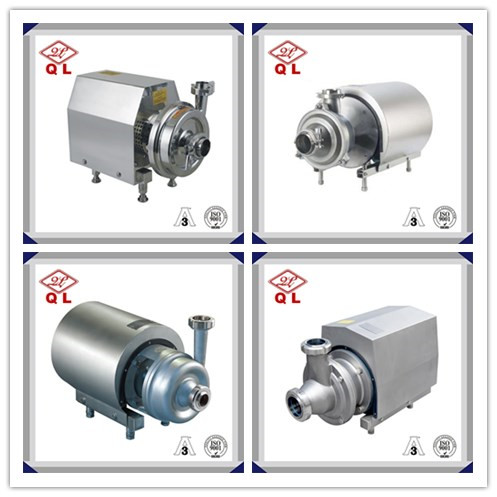“From the rising concentration of raw material costs, to the concentration of financial costs, and to the current rise in labor costs, the equipment manufacturing industry must inevitably develop in the direction of intelligence to resist external influences. The biggest weakness of the current domestic enterprises.†Chen Zhou, general manager of Shandong Yonghua Machinery Co., Ltd., represented the feelings of the vast majority of manufacturers and the judgment of the future.
Large-scale exhibitions are "barometers" of the development trend of the industry. At the 11th Tianjin International Equipment Manufacturing Exposition, reporters found that in the exhibition space of more than 80,000 square meters, one quarter of the 1200 companies participating in the exhibition were industrial robot companies. The products were mainly concentrated in the market demand. Palletizing, loading and unloading, welding and other fields.
Exhibitor Jinan Xintian Technology Co., Ltd., the head of the sheet metal equipment division, Guo Yuxi, patted the exhibiting machine and said that it is a laser marking machine with a high degree of automation. With the use of a feeding system, it can save manpower. "This machine sells 500,000 yuan. The exhibitor was selected by Zhangzhou's customers early in the morning."
Another exhibitor, Tianjin Easyspeed Robot Technology Development Co., Ltd. released three new products at the show. Zhang Tianjiang, general manager of the company, said that the six-axis general-purpose robot developed independently by the company at the exhibition last year won an order of several million dollars due to outstanding automation performance. This year, the three products are mainly aimed at the loading and unloading process in the stamping industry. The market demand is large. On average, "one robot can replace two workers." In the live demonstration, the robot took only 2 seconds to complete the loading and unloading process.
“China is transforming itself from a large importer of robots to a major exporter.†According to analysis by Mei Jiangping, a director of the School of Mechanical Engineering at Tianjin University, there are more than 500 robot manufacturers in China, and there are more than 40 related industrial parks. This year, robot production is expected to reach one. 200 million units. He believes that the traditional process of intelligent transformation and upgrading of manufacturing will bring about a huge demand for intelligent equipment manufacturing industry, robotics and smart equipment on the mid-lower related industries will rise rapidly.
In front of the general trend of “machine substitution†in China's manufacturing industry, Gu Shaojun, general manager of manufacturing base of Meike International Furniture (Tianjin) Manufacturing Co., Ltd., reminded that “the “machine substitution†must be accompanied by the reduction of the existing frontline jobs. It is worthwhile for relevant departments to make plans in advance to resolve contradictions."
In this year's "Two Conferences" government work report, the implementation of "Made in China 2025" has been widely concerned by the manufacturing industry. Guo Yuxi believes that "Made in China 2025" coincides with the "Industry 4.0" proposed by Germany, and they are all mobilizing the cloud computing, big data, and the Internet of Things around the manufacturing industry. The manufacturing and sales model of the manufacturing industry is here. There will be revolutionary changes in this context. He said that he hopes that 3D printing can truly enter the factory in this wave of intelligence, so that production can become more efficient, more personalized, and production costs can also be reduced.
Manufacturers generally have a consensus that under the background of “Made in China 2025â€, which outlines the development blueprint of the manufacturing industry in the next 10 years, smart manufacturing will be the main direction for China’s manufacturing in the future. To realize smart manufacturing, the integration of the Internet and traditional industries will be The most immediate driving force.
The Internet has changed a lot of industries. The manufacturing industry can't make a footfall in the Internet era. This is a topic that reporters heard from the heads of manufacturing companies in their research. Experts of the National Smart Manufacturing Development Alliance Secretary General Liu Liushi suggested that with the help of the Internet, the domestic manufacturing industry needs to form an autonomous, controllable, safe and reliable intelligent product R&D and production system, and build a new production organization with rapid response, precise management, and flexible manufacturing. the way. With new manufacturing technologies, manufacturing models, and manufacturing concepts to solve the problems facing the transformation and upgrading of manufacturing.
A pump used to move and meter slurries, solutions, or food products that must be processed according to certain cleanliness standards required either by law or a company`s own regulations. They are designed to meet regulatory requirements usually have to undergo on-site inspections from representatives the Food and Drug Administration or the U.S. Department of Agriculture.
Sanitary pumps are available with a variety of features. Adjustable speed pumps can operate at speeds selected by an operator while continuous duty pumps maintain performance specifications at 100% duty cycle. Run dry capable pumps can operate without pumped fluid or external lubrication for an extended period of time. Some wastewater pumps include a backup battery, grinding mechanism, pressure gage, control panel, level control device, thermal overload protection, strainer, filter, or suction. Other wastewater pumps are belt-driven, close coupled, explosion-proof, frame mounted, hygienic, jacketed, sealless, self-priming, portable, or are configured to pump sticky or stringy materials. Multistage, reversible, plug-in, and washdown duty capable devices are also available. Sanitary pumps can move media either vertically or horizontally, depending on the direction of the pump stator/rotor assembly.
Sanitary pumps are used in a variety of commercial and industrial applications. Examples include agriculture and horticulture, brewery and distillery, dairy, food processing, food service, medical, municipal, OEM supply, and pharmaceutical and biotechnology applications.
Products: Vacuum pump, Pressure pump, Food pump, Centrifugal pump, Stainless steel pump etc.
Material: SS304, SS316L
Standard: DIN, ISO, IDF, 3A, BS, SMS,RJT
Application: Pharmacy, beer, food, dairy, beverage, cosmetic, chemical industry.

Sanitary Pump
Sanitary Pump,Food Grade Pump,Sanitary Centrifugal Pump,Submersible Sump Pump
Wenzhou Qili Fluid Equipment Co., Ltd. , http://www.qlssvalve.com